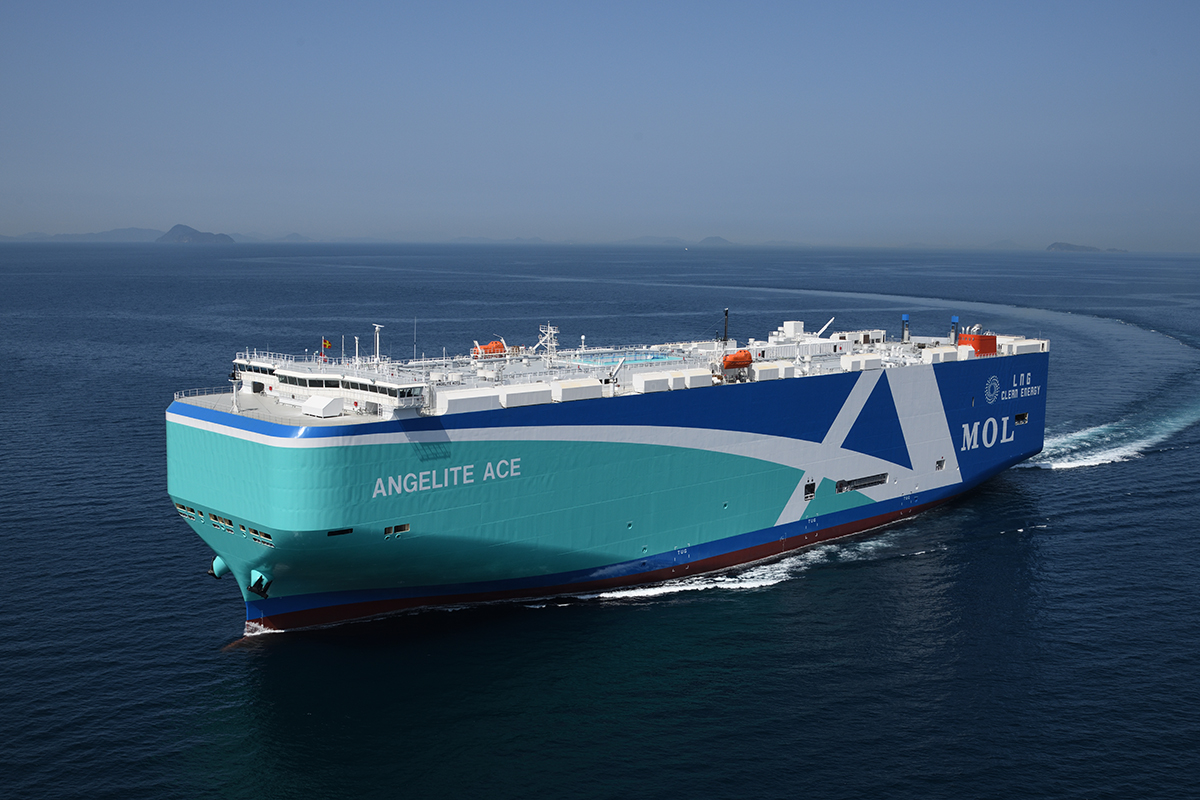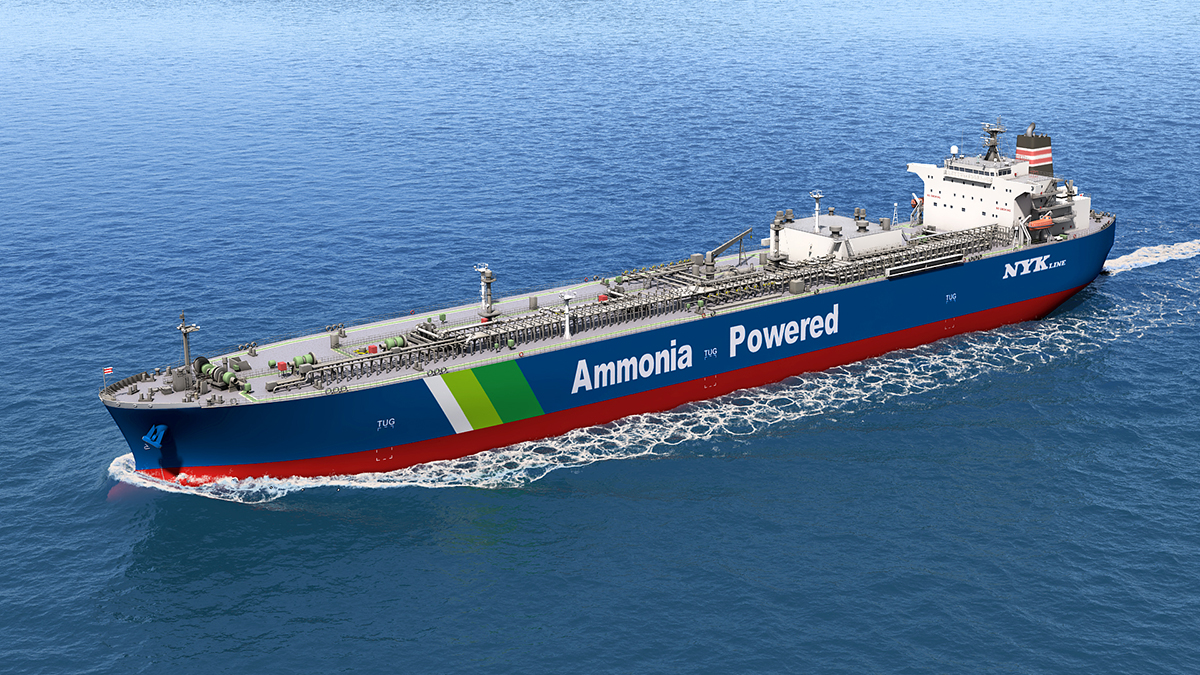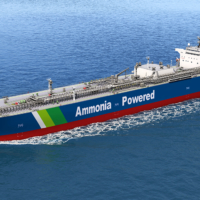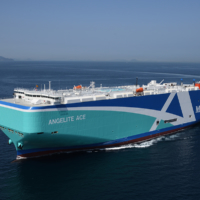Japan, a maritime nation surrounded by the sea on all sides, relies heavily on marine transportation for much of its trade. The shipbuilding industry, which constructs vessels for marine transportation, is especially key for the nation’s economic security.
Furthermore, Japan’s shipbuilders collaborate with companies in many related industries, such as marine engine manufacturers, and procure 90% of components from domestic suppliers. Most shipyards are in rural regions, supporting local economies and employment. The shipbuilding industry is therefore indispensable for Japan.

Globally, the future remains uncertain due to ongoing tensions in Ukraine and the Middle East, and a series of tariff hikes by the U.S. administration of President Donald Trump. However, from a medium- to long-term perspective, maritime cargo volume has been constantly increasing, and we expect this growth will continue.
The International Maritime Organization is discussing implementing a legally binding framework to reduce greenhouse gas emissions from ships globally, with a target of achieving net-zero emissions by or around 2050. We expect this will further stimulate construction orders for ships, especially those using next-generation alternative fuels. We think Japan’s shipbuilding industry will be able to grow by steadily capturing this demand increase.
Given the IMO’s greenhouse gas emission targets, it is urgent to introduce alternative fuel measures now. Japanese shipbuilders must bring all our efforts together for research and development, speed up construction of zero-emission ships and promote their adoption. The government has set a target for Japan’s shipbuilders to achieve the top share in the global market for next-generation vessels in the 2030s.
On the other hand, there is increasing uncertainty in the international shipbuilding market. Last year, as more ships were built globally, China’s shipbuilders, which received generous support from Beijing, accounted for over 70% of the global total shipbuilding order volume and over 50% of the global total ship construction volume, while South Korean counterparts accounted for nearly 30% of the global total construction volume. By contrast, the combined market share for Japan’s shipbuilders decreased.
Furthermore, there have been a series of developments with significant implications for the shipping and shipbuilding industries, including bilateral tariff talks and the planned port fees on China-related vessels under the second Trump administration. In addition, Trump’s administration aims to revive the U.S. shipbuilding industry.
In this time of major changes in Japan, the shipbuilding industry is attracting greater attention than in previous years. This can be seen in the Basic Policy on Economic and Fiscal Management and Reform that was recently adopted by the Japanese Cabinet, and the Liberal Democratic Party’s emergency proposals to revitalize Japan’s shipbuilding industry.
Using the government’s support, we in the shipbuilding industry are working closely with shipping companies, marine equipment manufacturers and other parties to achieve the global top share of next generation vessels. At the same time, we aim to work to increase the presence of Japan’s shipbuilding industry so it can achieve a 20% share in the global market.
Specifically, we in the Japanese shipbuilding industry, with the government’s support, continue the efforts to develop next-generation ships, including zero-emission and autonomous ships. We also promote a shift toward shipbuilding that puts digital technology to greater use with capital expenditure support for shipbuilders and marine equipment manufacturers through GX (Strategy for Promoting Transition to a Decarbonized Growth-Oriented Economic Structure) transition bonds.
In anticipation of introducing new fuels, we intend to promote collaborative projects within our industry to strengthen resilience in competing with rival nations, while working with the shipping and the marine machinery and equipment industries to bolster the supply chain.
Examples of projects that are already underway include a joint project by seven shipping and shipbuilding companies to establish standard specifications and designs for liquefied carbon dioxide carriers and another by three shipbuilders to establish a construction plan for liquefied hydrogen carriers.

In addition to updating equipment, expanding construction volume will require various measures to secure and develop a skilled workforce, which is a critical issue. Beginning in the second half of the 2010s, the number of employees at our association’s member companies was falling as workload declined, but the figure turned upward a few years ago and has continued to increase to above 40,000. Demand is expected to remain resilient going forward, making it necessary to increase hiring.
Each of our member companies is actively working to improve work environments and raise wages. In addition, we aim to strengthen efforts to highlight the appeal of the maritime industry to the younger generation and actively hire personnel by collaborating with schools, municipalities and the central government.
We expect demand for new ships will increase, driven by expected moves to transition to zero-emission ships under the IMO 2050 target and future economic growth. I am certain that Japan’s shipbuilding industry will seize this opportunity to reemerge as an attractive sector and grow as an important key industry for the nation.
The shipbuilding industry will contribute to the economy and security of Japan and the world and, together with many related industries, will support regional economies and employment as an industry closely tied with local communities.






